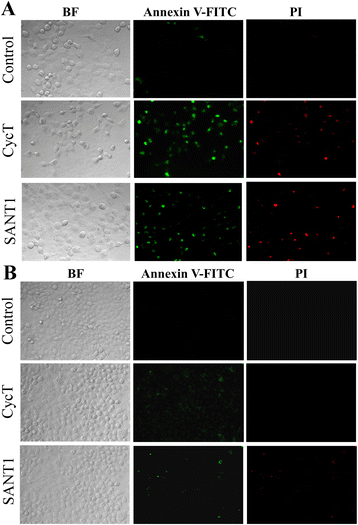Cyclopamine tartrate, an inhibitor of Hedgehog signaling, strongly interferes with mitochondrial function and suppresses aerobic respiration in lung cancer cells
- PMID: 26911235
- PMCID: PMC4766751
- DOI: 10.1186/s12885-016-2200-x
Cyclopamine tartrate, an inhibitor of Hedgehog signaling, strongly interferes with mitochondrial function and suppresses aerobic respiration in lung cancer cells
Abstract
Background: Aberrant Hedgehog (Hh) signaling is associated with the development of many cancers including prostate cancer, gastrointestinal cancer, lung cancer, pancreatic cancer, ovarian cancer, and basal cell carcinoma. The Hh signaling pathway has been one of the most intensely investigated targets for cancer therapy, and a number of compounds inhibiting Hh signaling are being tested clinically for treating many cancers. Lung cancer causes more deaths than the next three most common cancers (colon, breast, and prostate) combined. Cyclopamine was the first compound found to inhibit Hh signaling and has been invaluable for understanding the function of Hh signaling in development and cancer. To find novel strategies for combating lung cancer, we decided to characterize the effect of cyclopamine tartrate (CycT), an improved analogue of cyclopamine, on lung cancer cells and its mechanism of action.
Methods: The effect of CycT on oxygen consumption and proliferation of non-small-cell lung cancer (NSCLC) cell lines was quantified by using an Oxygraph system and live cell counting, respectively. Apoptosis was detected by using Annexin V and Propidium Iodide staining. CycT's impact on ROS generation, mitochondrial membrane potential, and mitochondrial morphology in NSCLC cells was monitored by using fluorometry and fluorescent microscopy. Western blotting and fluorescent microscopy were used to detect the levels and localization of Hh signaling targets, mitochondrial fission protein Drp1, and heme-related proteins in various NSCLC cells.
Results: Our findings identified a novel function of CycT, as well as another Hh inhibitor SANT1, to disrupt mitochondrial function and aerobic respiration. Our results showed that CycT, like glutamine depletion, caused a substantial decrease in oxygen consumption in a number of NSCLC cell lines, suppressed NSCLC cell proliferation, and induced apoptosis. Further, we found that CycT increased ROS generation, mitochondrial membrane hyperpolarization, and mitochondrial fragmentation, thereby disrupting mitochondrial function in NSCLC cells.
Conclusions: Together, our work demonstrates that CycT, and likely other Hh signaling inhibitors, can interrupt NSCLC cell function by promoting mitochondrial fission and fragmentation, mitochondrial membrane hyperpolarization, and ROS generation, thereby diminishing mitochondrial respiration, suppressing cell proliferation, and causing apoptosis. Our work provides novel mechanistic insights into the action of Hh inhibitors in cancer cells.
Figures






References
Publication types
MeSH terms
Substances
LinkOut - more resources
Full Text Sources
Other Literature Sources
Medical
Miscellaneous

